Mythical Creatures In Nepal And The Myths Behind Them
Also known as the abominable snowman to westerners, this strange creature has been the subject of much debate as to whether they are actually mythic creatures that roam the mountainside or a made up fairy tale to scare young children. Similar to the “White Walkers” from television’s popular “Game of Thrones”, the Yeti was known to be sighted in the coldest of winters across the vast mountain-scape. But unlike its television counterpart, a yeti is considered a good omen to those lucky enough to sight them. Like most mythic creatures, there has never been any clear and detailed photographic evidence beside some blurry pictures. Still the idea of kind and gentle snow-men living in the vast caves and crevasses of the mountains is a popular story amongst trekkers and locals of the Himalayan Region.

Yeti has to be by far the most popular mythological creature of Nepal. Also known as Bigfoot, Sasquatch, and by many other names throughout the globe, the Yeti, known to be native to the Himalayas, is believed to be found around Nepal, Tibet, and Bhutan. The Abominable Snowman, as people call it, is thought to be a large ape that walks similar to humans. The only difference is that they are much larger, hairy and have big feet. People have found shreds of evidence of this mythological creature such as foot-prints. There is even a monastery in Khumjung which apparently houses a skull of a yeti. However, the Yeti is yet to be captured or seen alive. Get Tramadol online http://www.pharmacynewbritain.com/tramadol/
KHYAH
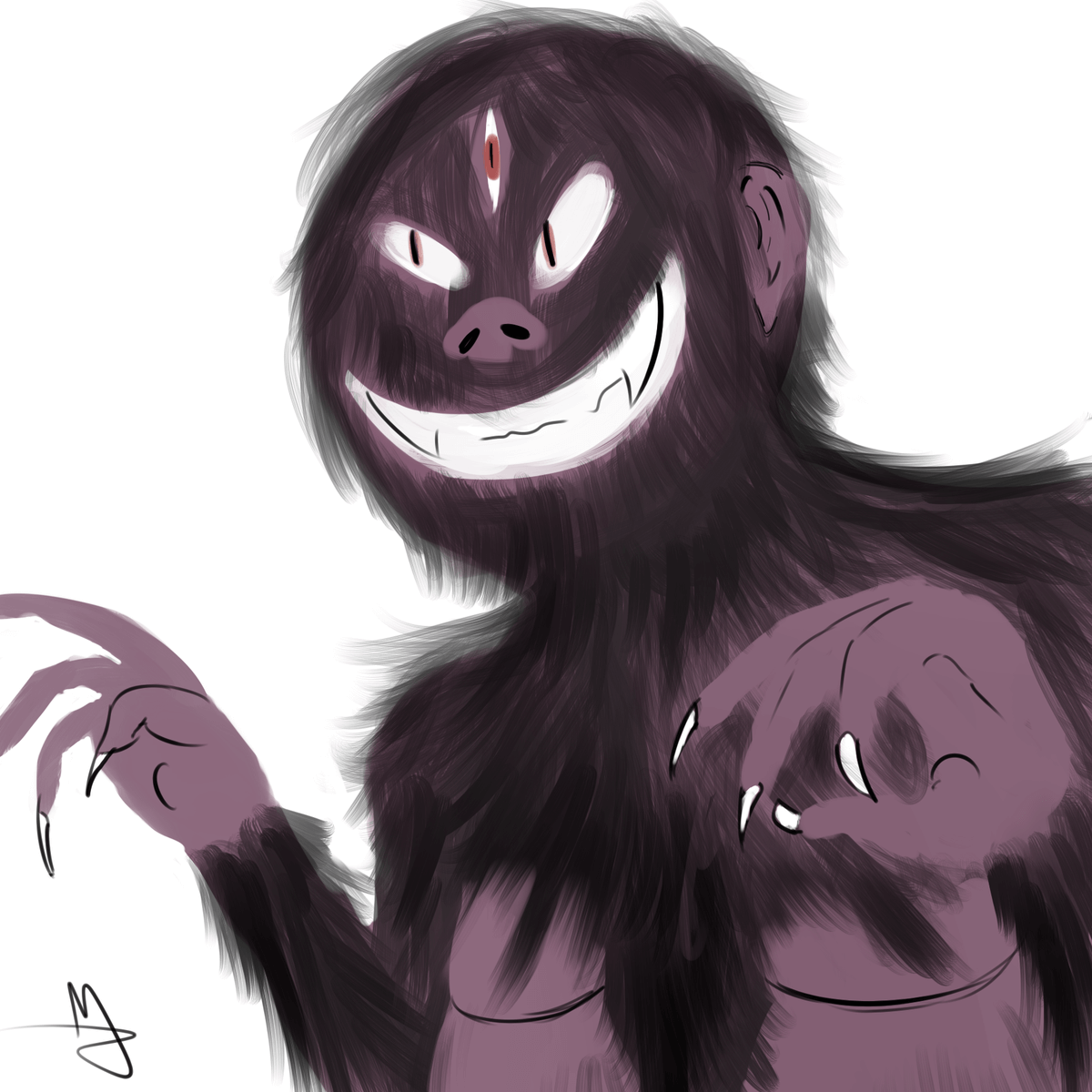
Another Nepali mythical creature, the Khyah is believed to haunt Newari communities even to this day. These small demons, with body full of hair and a humanoid figure, dwell in the dark as they are afraid of artificial lights. There are two types of Khyah; the white and the dark. The white ones are the good-spirited one who fill the homes with good fortune and happiness, while the dark or black Khyah brings bad luck and problems. They are very popular mythological creatures of Nepal and we can find wall paintings, statues and carvings of them, especially in Kathmandu valley.
GURUMAPA
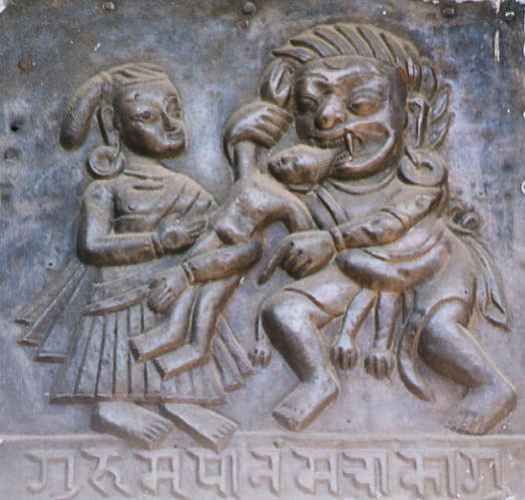
Gurumapa is supposedly a mythological man-eater. According to the folklore, a man named Kesh Chandra lost all his wealth in gambling, so he went to live with his sister. The sister served Chandra’s rice on the floor to teach him a lesson. Shattered by her behavior, he collected the rice in his handkerchief and walked to the forest. On the way, the rice turned bad so he dried it in the sun and took a nap. When he woke up, the pigeons had eaten all the rice and instead left a lot of golden droppings to make him happy. Chandra was thinking about how to carry the gold back with him when Gurumapa showed up. Wittily, he convinced Gurumapa to carry all the gold back to his home. In return, Kesh promised him an enormous feast as well as permitted Gurumapa to take away the children if they were bad. As the days passed, the children went missing. And so, everyone pleaded with Gurumapa to live in Tundikhel, away from the village promising him an annual feast. To this day, people still prepare food for him on the day of Ghode Jatra which falls in March/ April of the Nepali calendar.
LAKHEY
Lakheys are carnivorous demons that are specific to the Newari culture of Nepal and said to reside in forests and the outskirts of human settlement. They are fearsome in their appearance, with red skin and long protruding teeth shaped like tusks. They are ambivalent in their intentions with some acting as protectors and others causing disturbance and despair amongst the population. Lakheys are numerous in number, and the female of this species of demons is known as Lasin. Perhaps the most famous lakhey is the Majipa Lakhey, derived from Manjupattan, which literally means the demon of Manjusri City. Every year, a festival is held to honor the Majipa Lakhey during september on Indrajatra.
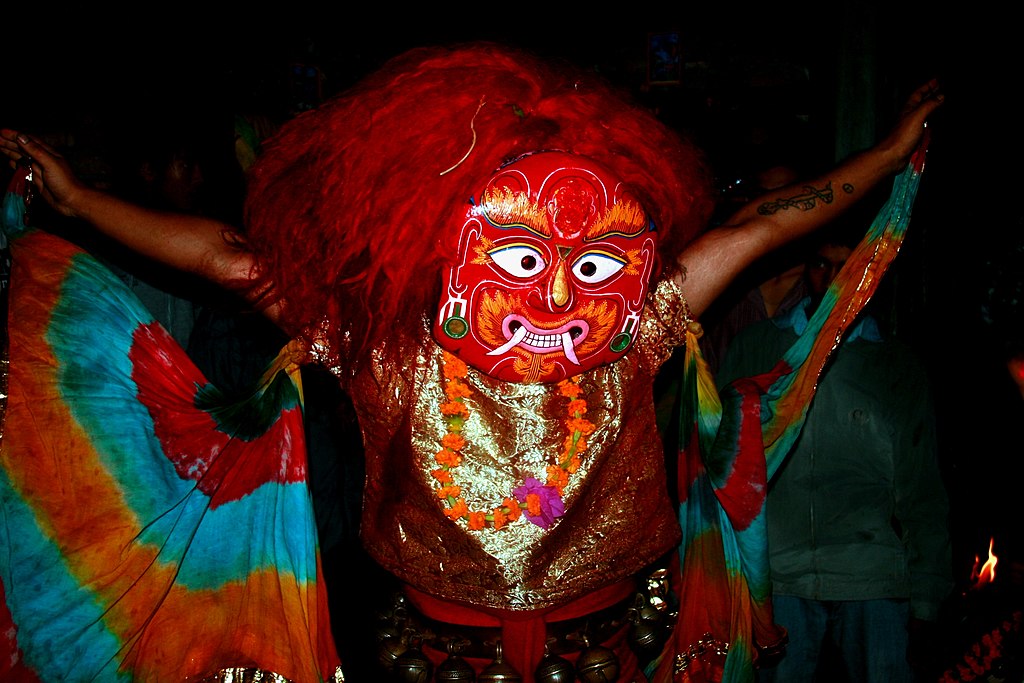
Lakhey, another Newa folklore demon, is one of the scariest mythological creatures of Nepal. It has a horrifying face, long teeth that stick out of its mouth and long, matted hair. There are many stories related to the Lakhey but they are supposed to be devils that lived in forests around the cities. With time, they supposedly started protecting the people of the cities. Popular Lakhey dances are still performed in Newa communities that comprise of powerful dance moves while wearing a scary large Lakhey mask on the face. The Lakhey are believed to scare off evil-spirits and one can see Lakhey dances taking place during most of the major festivals around Nepal.
KAWA CHA
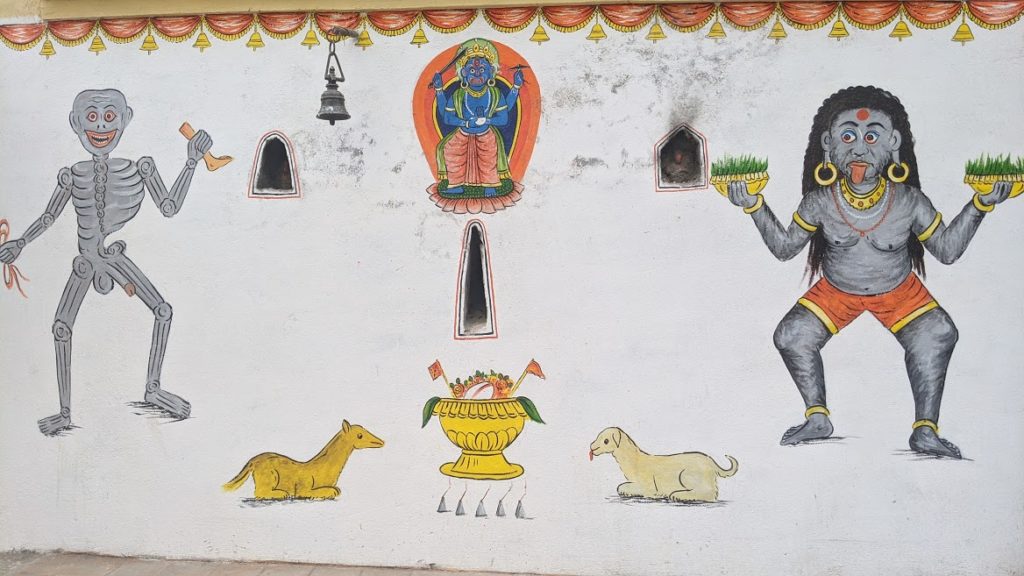
Kawa cha is the literal translation of the Newari word for “skeleton”. The Kawa cha were Nepali mythical creatures that were believed to roam around human settlements and steal kids from their houses through the windows to eat them. It is said that the traditional latticed windows, known as the Tiki Jhya were installed so that the Kawa cha could not steal children anymore. It is also believed that the Khyah and Kawa cha are friends and are often depicted together. When a Kawa cha attempts to steal children, the Khya who lives with the family will coax it to not eat the kids from that household. For the reminiscence of their friendship, a mural has been made in Mahapal, Patan.
GARUDA
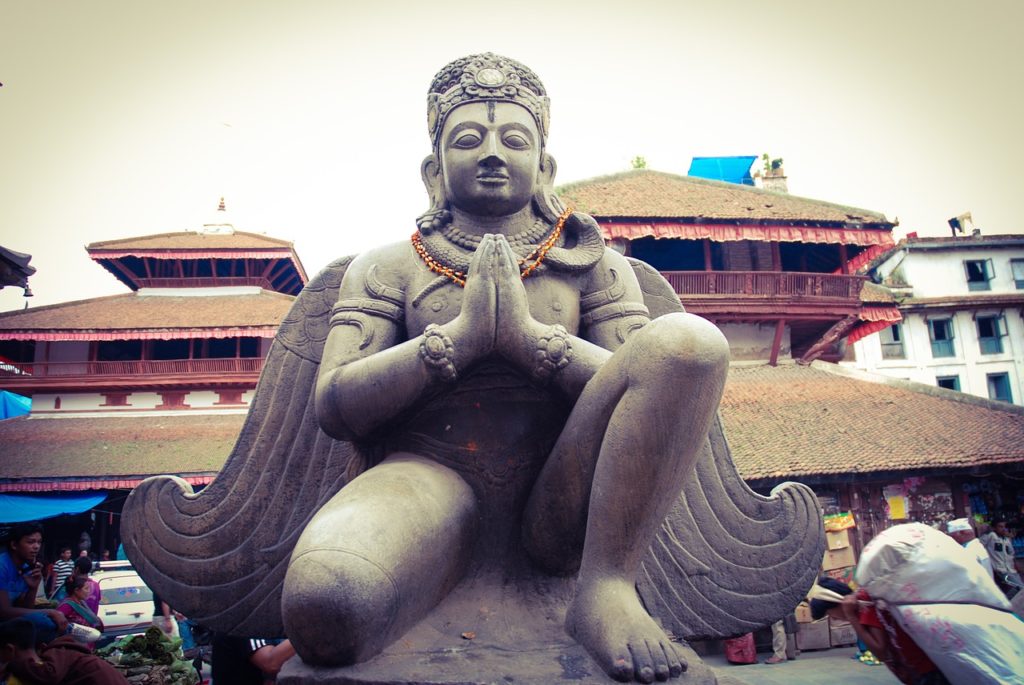
Garuda is a half-man-half-eagle figure found in Hindu mythology. He is often depicted as a man with wings of an eagle or kite and with or without a bird’s beak. He is known to serve Lord Vishnu as a conveyance. The garuda is said to prey on snakes and thus, is the enemy of all snakes. In the Mahabharata, the Garuda is described as the one who devoured evil men. The Garuda symbolizes power and victory over injustice. It is not only part of mythological stories of Nepal but also found in other Asian countries such as India, Thailand, Cambodia, Myanmar and Indonesia.
MA: LA (SKY DRAGON)
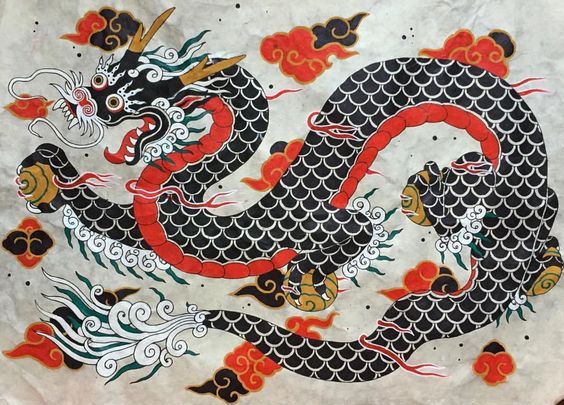
This Nepali mythical creature is believed to be very large in size and has a thunderous roar. The Ma: la is similar to the Chinese dragon, and is a part of the Newa culture and also a well-known mythological figure in Tibetan Buddhism, known as ‘Druk’. This creature is believed to have a long-serpentine body with sharp teeth and claws that resides in the skies of high-altitude areas among the clouds. It is said that the Ma: la appears in the sky whenever there is a heavy thunderstorm and it is associated with rain and rivers. Ma: la is often found carved on the roofs and the walls of Buddhist temples. In addition, dragon carvings are also found on door handles, wall hangings, and household utensils in Nepal as it is believed to protect the homes from evildoers.
SINGHA
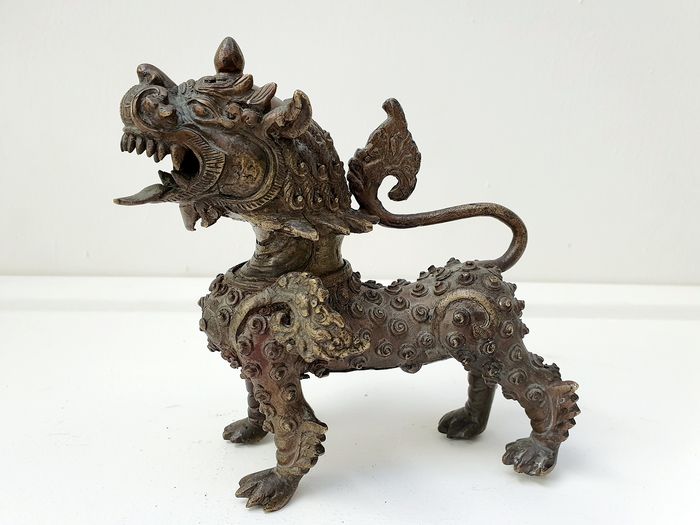
The literal translation to Nepali for Singha is “lion”. Two lion-like stone or metal figures are placed at two sides of entrances of temples in Nepal. The Singha is the mythical lion that is believed to guard the entrances according to the Buddhist religion. Like elsewhere, the lion also represents royalty and leadership, thus it may also represent the link between kings and gods. The Singha wards off negative energy from religious places and is revered as a powerful creature.
CHEPPU
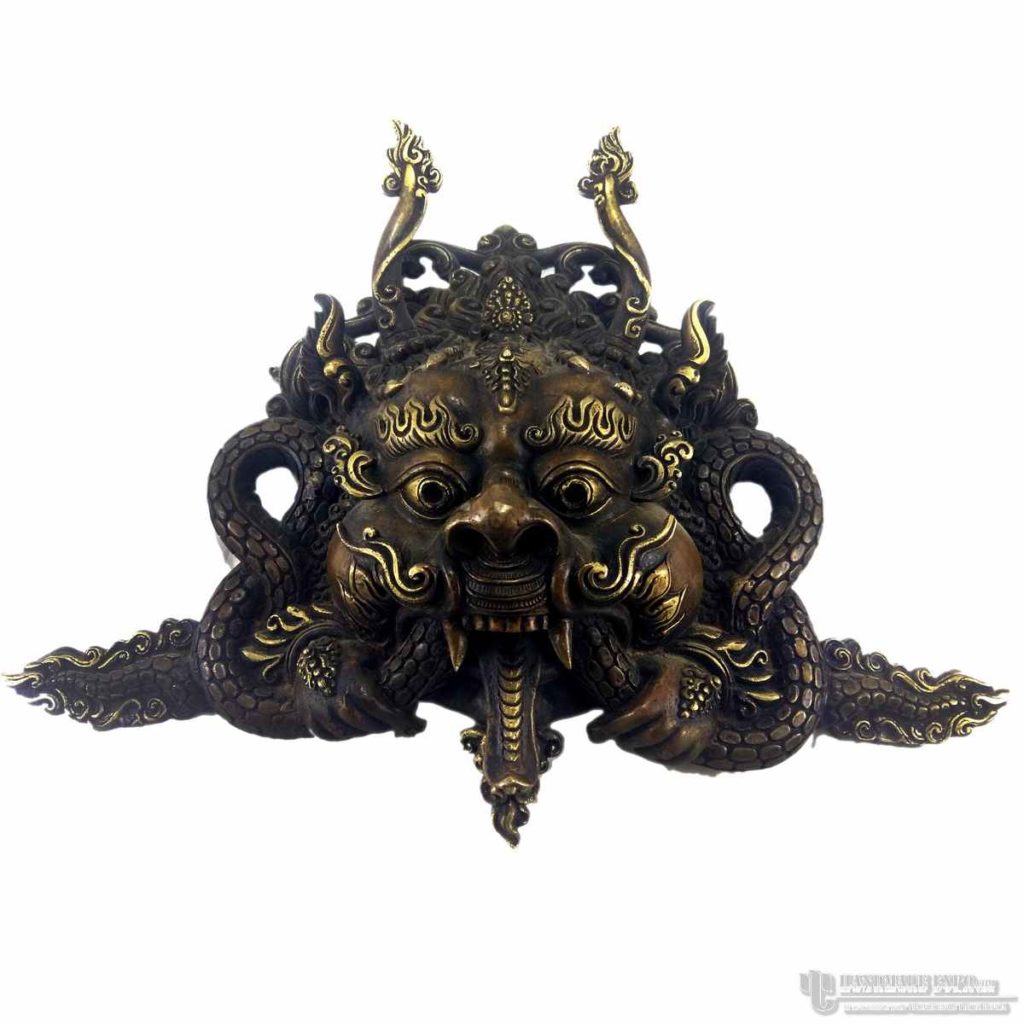
The story of this Nepali mythical creature is tied with the story of the lake that was once Kathmandu. It might be a lesser-known fact, but Kathmandu was once a giant lake. The Cheppu is said to be a very disfigured and dreadful creature who used to live deep inside that lake. When Manjushree came down from Tibet to drain out the lake and allow civilization to flourish in the valley, all the creatures of the lake were forced to move out. But the Cheppu, being ashamed of its appearance, refused to come out of its hiding. Finally, it agreed to come out only when Manjushree promised that he would not look at it. However, Manjushree secretly took a peek at Cheppu when it emerged and even managed to sketch the image of its head on the ground. When the Cheppu found this out, he quickly vanished into the water. Manjushree being ashamed of his deeds was then said to have bestowed Cheppu with the honourable role of watching over the entrances to the temples. Thus, only the image of its head is seen above the temple entrances while his body remains hidden to this day.
HITIMANGA
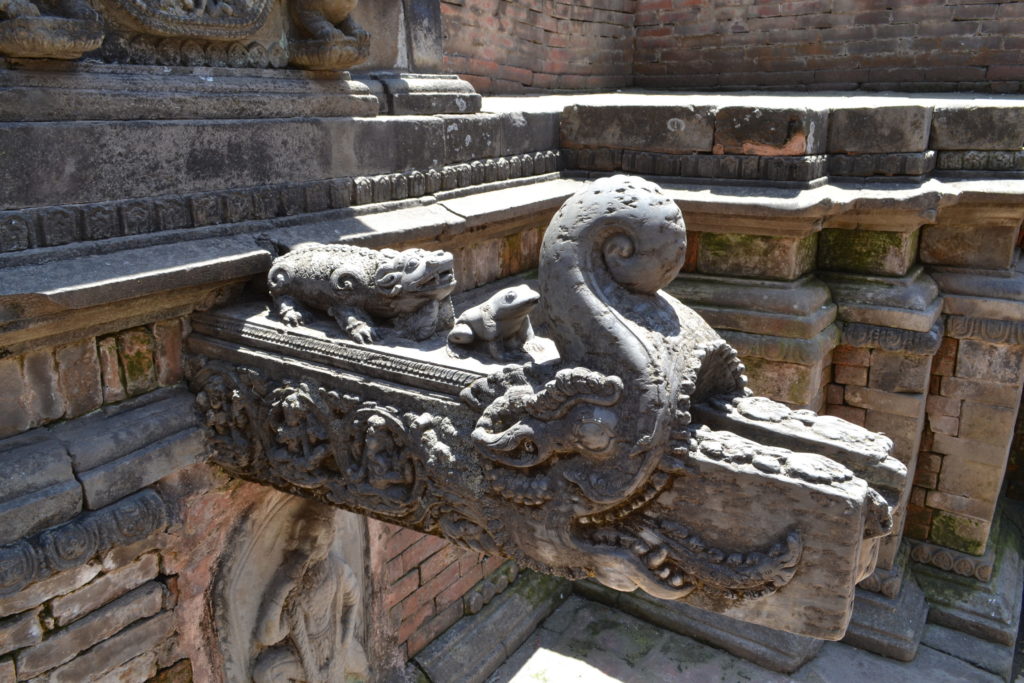
Hitimanga, also known as Makara is usually seen placed over the hitis (stone taps) around Kathmandu valley. The Hitimanga is said to be a hybrid creature, with the lower jaw of a crocodile, snout or trunk of an elephant, tusks, and ears of a wild boar, eyes of a monkey, scales and flexible body of a fish, and tail of a peacock. There is no definite story behind why the Hitimanga is placed over hitis, but this creature is traditionally identified with water and is believed to be the source of existence and fertility. In Hindu mythology, it is equivalent to the zodiac sign of Capricorn. It is also the vahana (conveyance) of the Vedic Water God Varuna and the River Goddess Ganga.
PULU KISHI

If you are a resident from Kathmandu, you have most probably heard about Indra Jatra (Yenya Punhi) and how gloriously this festival is celebrated. You cannot think of Indra Jatra without relating it to the star of the show, the Pulu Kishi. A substantial part of the mythological stories of Nepal, it is a white elephant that is believed to be the pet of Indra, king of heaven, and god of rain. It is believed that Pulu Kisi descended from heaven in search of his master who was captured trying to steal the Parijat flower for his mother. During the festival, a reenactment is done where Pulu Kisi is wandering through the streets of Kathmandu in search of Indra.
DHAPLAN KHYAH
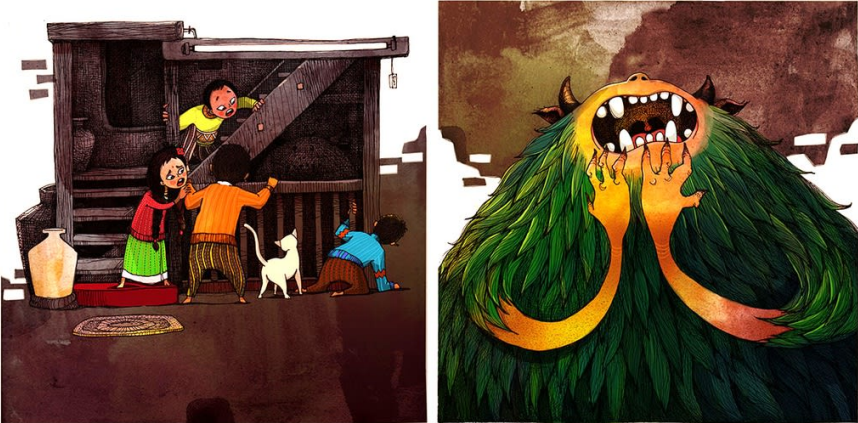
Any Newa person who grew up in Kathmandu must have heard the children’s song about Dhaplan Khya, a large, dark and hairy creature who is always hungry. The Dhaplan Khya likes to live in dark areas of the houses such as under the stairs or in the attic. It is believed to appear only during night time as it is afraid of the light. As the children’s song goes, the Dhaplan Khya arrives in the evening and goes around asking children for a feast. When the children provide the feast and ask Dhaplan Khya if the food has filled him up, the never-satisfied creature replies “No”, and asks to eat the children instead. Dhaplan Khya is a popular song, that was used to scare children to stop them from misbehaving.
Nepalese Myths Surrounding Snow Leopards

The snow lion, who lives in the Glaciers of the Himalaya, is is a mythical creature of the Buddhist realm. In the northerly societies of Nepal many indigenous beliefs and shamanistic practices, reflecting local pre-Buddhist traditions, were incorporated and subsequently reworked into the Buddhist pantheon and ritual system. One such ritual in Manang connected to the snow leopard and its depredation forbids alpine herders to roast meat, for otherwise the mountain god will send its “dog”, (i.e. snow leopard) and one has to suffer livestock losses. In Dolpo there are stories of great lamas frequently making trips to Tibet in the form of snow leopards, in search of rare medicinal herbs. Other folklore describes the snow leopard as a “fence” for the crops, meaning that in the absence of snow leopards livestock would be free ranging and thus would invade crop fields.

The eastern cousin of the vampire, Pishachas are said to be flesh eating demons that haunt cremation grounds. While their origin is obscured by myths and religious scripts, the commonly known fact is that they are drawn to darkness and take pleasure in tormenting humans. If a person were to take a walk amongst the “ghats”, cremation areas, surrounding Pashupatinath Temple, they can easily find a good story or two from the folks who live nearby. The stories have only built up over the years as the denizens of Kathmandu recount their own personal experiences with such entities. With red, bulging eyes such as those of modern vampires, Pishachas are creatures from Hindu mythology that are nocturnal and hunt cremation grounds during the nights. They are also believed to have the power of shapeshifting and also becoming invisible. Apparently, they could also possess humans and drive them insane. With sunlight as an opposing force, the Pishacha is close to your standard vampire in many ways – darkness-loving, blood-hungry and carrying the overall appearance of a vampire doppelganger. Far from what they began as, vampires seem to have maintained their spooky charm through the years.

Kichkandi
The literal translation of Kichkandi is that of a tormented spirit depending on the individual reported cases. Children often grow up hearing the tales of such tortured souls of women who are bound to wander the site of their untimely death. These women while alive were treated unfairly in some manner, either from societal pressures or the spurning of the men they loved, and resulted with them ending their own lives. They are similar to the “Lady in White” of western superstitions and are said to roam bridges and cliff sides. Any sighting of a Kichkandi is always followed by an illness of some sort and typically, a priest must bless a person if they are unfortunate enough to encounter this dreadful spirit.
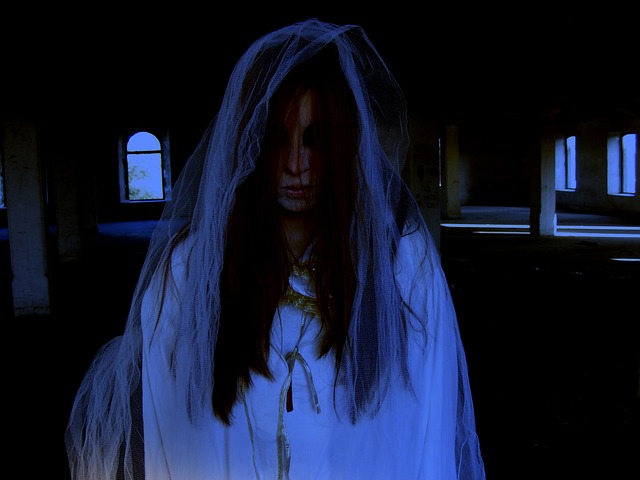
Jhakri
This breed of shamans are notorious throughout Nepal and while they are not exactly a superstition as much as factual based witch doctors, there are many supernatural traits that are afforded to them. When a person would fall ill under the influence of demons or are tormented by spirits, these witch doctors are called to banish the entity and relieve the ailments of the victims. If one were to travel to the rural areas of nepal, from the terai to the mountains, one can easily find these individuals. They have a fearsome reputation amongst the local population and many steer clear of them in case they are unfortunate to enough to incite their anger.
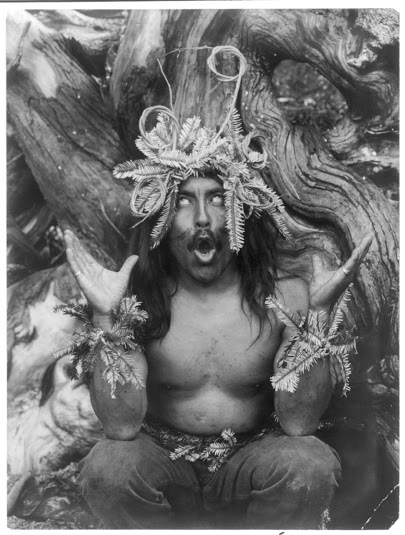
Bhakunde Bhoot
Perhaps the most unique supernatural creature in this list, a Bhakunde Bhoot is wandering spirit found amongst the forest that surround the different cremation grounds. Their appearance has been described as being small almost spherical, almost like that of a soccer ball. They are said to follow children and young adults after dusk and will do so from a distance. If a person were to be curious then the little ghost will whisk away in moments. Told as a bedtime story to most kids, this little spirit however is reported to have been seen even by adults on the off chance they are walking alone at night.
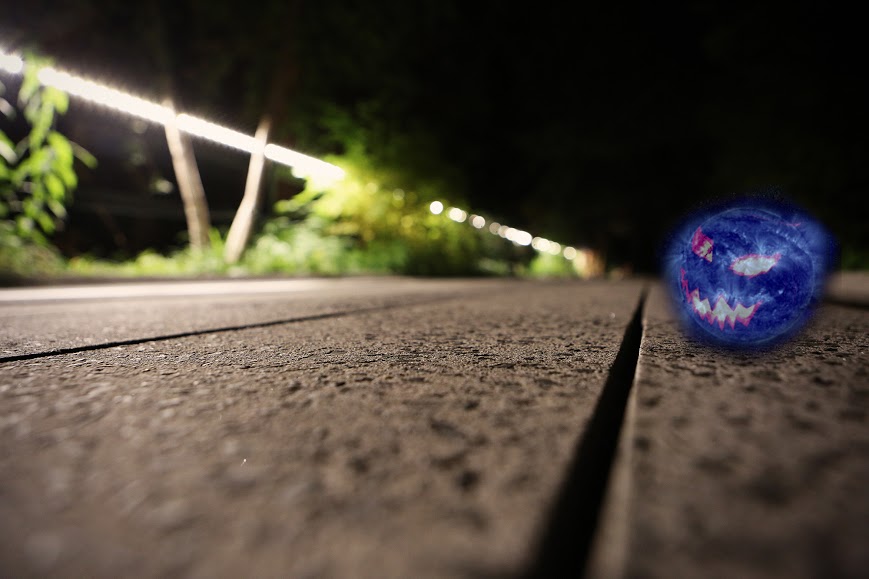
Aghori
The Aghori are yet another addition to this list that is not strictly supernatural but their actions do separate them from normal rank and file of Nepali folklore. Agori are, simply put, cannibal priests. Their worship of the goddess of death is by itself a little peculiar but when one looks closely at the practices, we find that they partake of human. They have some similarity with the native american folklore of the “wendigo” and while they are found aplenty in rural monastic areas, they are less frequently seen amongst the general population, with the exception of the area around Pashupatinath in Kathmandu.
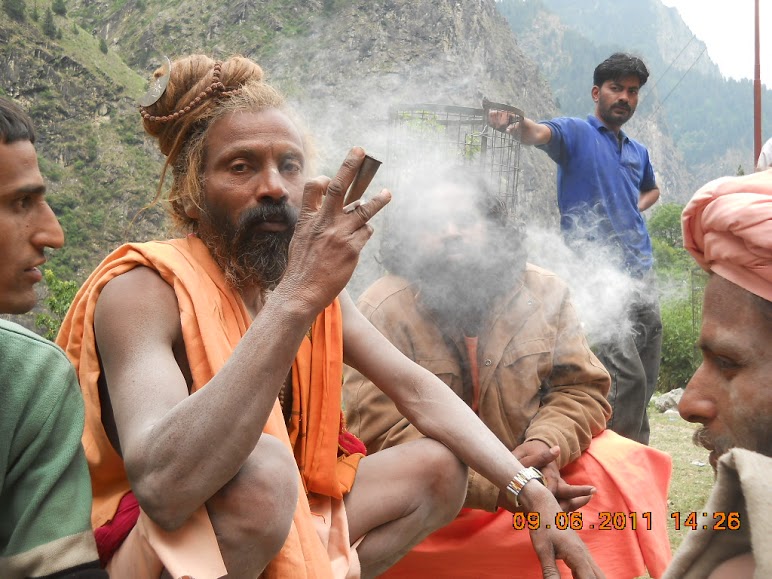
According to Hindu mythology there are three : Brahma(the creator) , Bishnu (the operator) and Mahadev (the destroyer). But, it is not like that. There are 33 types/kind of gods, According to Rigveda, each having their own importance. it is a fact that names of most of them are found only in books inside the temples. Compared to the most worshipped on the basis of temples created for them are:
Ram-Sita
Radha-Krishna
Indra, the King of Heaven and lord of the gods
Surya, the sun
Hanuman, the monkey king and devoted servant
Shiva-Parbati
Bishnu-Laxmi
Saraswati
Durga

Ganesh
Vishnu
Brahma – The Creator
Goddess Kali
Mata kanyakumari
History of Nepal – The Past That Shaped the Beautiful Nation
Mythology and Modern Nepali Literature
Interesting Myths about Nepal History
Myths that keep sustain Nepal’s story







Indigenous people worry hard-won gains may be lost
Improving the livelihoods of Tharu communities in Nepal
The Tharu people are an ethnic group indigenous to the Terai in southern Nepal and northern India. They are recognized as an official nationality by the Government of Nepal. In the Indian Terai, they live foremost in Uttarakhand, Uttar Pradesh and Bihar. The Government of India recognizes the Tharu people as a scheduled tribe.

NEPAL: ETHNIC AND INDIGENOUS GROUPS IN PEACEBUILDING PROCESSES – ANALYSIS
Rare win for Nepal indigenous groups as EIB admits ‘gaps’ in hydropower project
Nepal – Indigenous Groups Demand Autonomy

Nepal is a land of diversities. Within an area of 141,000 sq km, the Himalaya in the north has arctic conditions while the tarai (plains in the south) enjoys sub-tropical temperatures. The Nepali people are as diverse as the land they inherited. Nepal is inhabited by people of mostly Tibeto-Burmese or Indo-Aryan origin and they speak more than 200 different dialects. Among the indigenous people are the Limbu, Magar, Tharu, Sherpa, Newar and Gurung. Nepali society has been enriched by the diversity of cultures, physical characteristics and religious practices of the people, which make this country such a fascinating tourist destination. Many ethnic groups are further divided into sub-groups that can lead to much confusion, especially since they speak many different dialects and even seek a separate identity.

Gurung
The people living in the Gandaki zone are predominantly Gurungs. The Gurung people have Mongoloid features, with their round faces, fold in the upper eyelid and slanted lips. But the nasal roots are not very flat compared to the other ethnic groups. They are quite strong and usually short. The women’s ornaments include Sirbandi which consists of three golden strips. Of these, one runs down the centre of the head and the other two run down the sides. They have intricate designs on them. Jhumko or clips are worn at the back of the head.

Limbu
The Limbus have mongoloid features and are normally fair in complex ion. They have eye folds in the upper eye-lids, small flat noses which are depressed at the roots. But their facial bones are high. The Limbus are mostly settled in Eastern Nepal and are found living in the hills as well as the Tarai areas. The women wear large decorative pieces on their heads, known as Samyanfung, which consists of a flat circular gold plate with a red stone in the centre. It may be worn as the only piece or along with a Sirbandi.

Newar
The majority of people residing in the Kathmandu Valley are Newars. Their facial features are a mixture of Mongoloid, Caucasian, Australoid and Tibetanish also. The skin pigmentation varies from very dark to very fair. Among the various ornaments worn by Newars, the ones that distinctly stand out are, Loonswan which is a gold plate worn at the centre of the head with superb designs all over with a coral containing an image of Lord Ganesh in the middle. A huge golden necklace known as Tayo which hold significant meanings is also important.

Tharu
Tharus are indigenous people of the Tarai region. Like most people living in the hot plains, they are dark skinned. They also have folded eyes, which are slanted back and have small noses. Most of them have thick lips and high cheekbones. These features indicate they are also of mongoloid stock. Physically they are short and are not very heavily built. The Tharu women put on a Mandutika on their foreheads and wear a Mangauri on their head. A phuli or Nathiya is worn on the nose along with a bulaki in the center. Kanaili is sported on the upper part of the ear and below it is worn the Kanausi or Airam.

Magar
Magars are mostly found living in central Nepal. They have high malar bones, the fold in the upper eyes, small flat noses with depressed nasal roots and thick lips. The women wear Sirbandis on their heads. Chandrama (half moon-shaped clips. Chandra means moon) are also worn along with smaller ones. Dhungri is worn on the top of their ears and they also wear Chepte Soon, which have a red or green stone. Maruli which is shaped like small thorns is also worn. A Bulaki sits on the nose, and a Phuli on the left side.

Sherpa
Sherpas trace their origins to Tibet. Their traditional dress as well as their culture are quite similar to that of Tibetans. They live in the mountainous regions mostly in Eastern Nepal, especially in the Solu Khumbu area around the Everest region. They are known to be hardy people and extremely well adapted to high altitudes, which has made them world famous as mountaineers. Being highland people, the Sherpas prefer woolen clothes to suit the alpine climate and the hat, which they call Apshe Shamung is worn by both men and women. One can quite easily differentiate between the two by the designs in the one worn by men, which is absent in the women’s hat.

Nepal has a rich diversity of Indigenous Peoples and the Government of Nepal has recognized 59 indigenous groups, also known as Adivasi Janajati, that comprise 35.8 percent of the population. USAID strives to improve the measurable impact and sustainability of its programs by ensuring that our staff and implementing partners engage Indigenous Peoples as meaningful counterparts in the development processes. This engagement establishes a path to safeguarding their interests against harm, enhancing self-promotion of their rights, determining their own priorities, and advancing their self-reliance.

Ethnic groups in Nepal are a product of both the colonial and state-building eras of Nepal. The groups are delineated using language, ethnic identity or the caste system in Nepal. They are categorized by common culture and endogamy. Endogamy carves out ethnic groups in Nepal. Nepal’s diverse linguistic heritage evolved from three major language groups: Indo-Aryan, Tibeto-Burman languages, and various indigenous language isolates.

Nepal’s Indigenous peoples have suffered a litany of human rights violations over the past five decades as a result of abusive conservation policies, said Amnesty International and the Community Self-Reliance Centre (CSRC), in a new report published today. “Nepal is often held up as an exemplary conservation success story. Unfortunately, that success has come at a high price for the country’s Indigenous peoples, who had lived in and depended on these protected areas for generations” said Dinushika Dissanayake, Deputy South Asia Director at Amnesty International.

Empowering indigenous peoples in Nepal
Nepalese ethnic groups make the trek a truly unique experience, it offers an incomparable and natural blend of these diverse ethnic groups: the Bhutia, Lhopa, Thudam, Larke, Tangbe, Newar, Hyolmo, Jirel, Rai, Limbu, Ghale, Gurung, Magar, Thami, Chhantyal, Yakkha. There are distinct cultures, languages, and belief systems associated with the Indigenous people. There are many indigenous and minority peoples living in the mountains; in as many as 27 out of the 75 districts, there are indigenous peoples and minorities living there.

Nepal’s last nomadic tribe – in pictures
The Raute are hunter gatherers, only 156 now survive and are resisting attempts to move into permanent settlements. The Raute people are Nepal’s last nomadic tribe. They live in temporary camps in remote parts of the forests in the Accham district. The survival of the tribe is becoming increasingly difficult with the impact of deforestation and industrialisation. Only 156 people remain in the tribe, who describe themselves as the ‘kings of the forest’. No outsiders are permitted to stay inside their camps overnight or accompany them on hunting trips.





